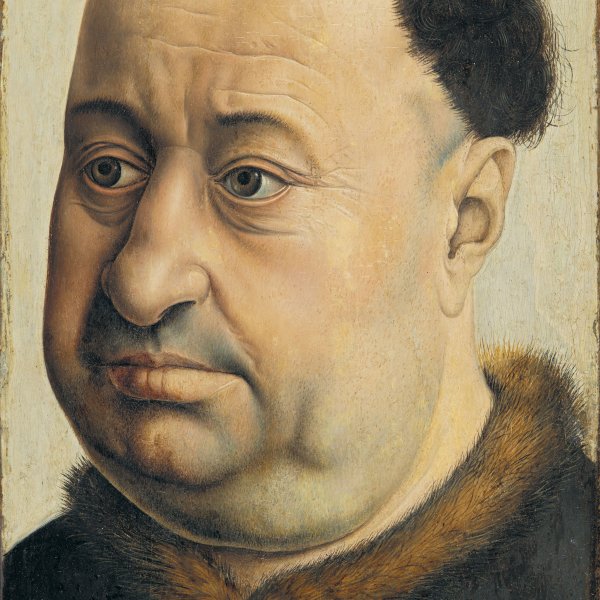Robert Campin
(?), ca. 1375-Tournai, 1444
Robert Campin has been identified as the anonymous Master of Flémalle. The latter derived his name from the monastery at Flémalle near Liège, for which he painted the panels now in the Städelsches Kunstinstitut, Frankfurt, and which was used to identify a group of stylistically similar works whose attribution was the subject of debate. Campin’s name is mentioned in documents of 1405 and 1406 in Tournai where he was registered as a painter and acquired citizenship in 1410. It is known that he was involved in disputes in the Tournai painters’ guild that arose around 1420 and that twelve years later he was the subject of a legal condemnation, in relation to which Margaret of Burgundy interceded on his behalf. Campin remained in Tournai until his death in 1444. He was a celebrated artist in his day, a fact evident from his material possessions and from his flourishing workshop. Among his pupils were Jacques Daret and Rogier van der Weyden, both represented in the Museo Thyssen-Bornemisza. Of these two talented pupils it is Van der Weyden’s early work that reveals the most pronounced influence of his master. As Charles de Tolnay noted, Campin brought about a rupture with the International Gothic style and introduced a new way of interpreting reality that he developed along with Jan van Eyck. Campin used the technique of oil applied in fine layers while his modelling was particularly three-dimensional. Among the panels attributed to the artist is The Nativity of 1420–25 (Musée des Beaux-Arts, Dijon), the Merode Triptych of around 1426 (The Metropolitan Museum of Art, New York), Saint Barbara reading (Museo Nacional del Prado), and a mural in the Halle des Jurez depicting the king, queen and dauphin of France with two saints. The latter was executed in 1428 but was destroyed in 1436 and is now known through copies. Among Campin’s portraits is Portrait of a Woman of around 1430 (National Gallery, London).





